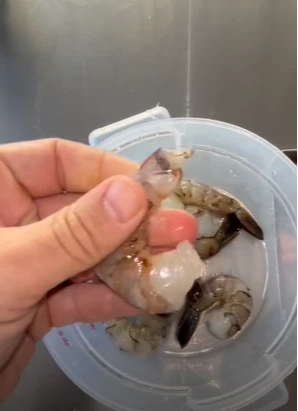Shrimp is a common seafood that many of us are familiar with. The method of processing shrimp can vary depending on the preparation and the type of shrimp being used. However, there are some common steps such as removing the shrimp line, cleaning out the shrimp poop, and peeling off the shrimp shells.
Peeling shrimp may seem simple, but there is a right and wrong way to do it. Many people make the mistake of holding onto the shrimp’s tail and pulling it to separate it from the body. However, this method can remove some of the shrimp meat and make the overall appearance less attractive.

This method is not wrong, as it still allows you to remove the shell at the tail of the shrimp. However, it can result in some loss of shrimp meat and make the shrimp less visually appealing.
The correct way to remove the shrimp tail shell is as follows: Grasp the two large, hard parts at the shrimp’s tail with your hand and pull them out. This way, the shrimp will retain its tail meat, look beautiful, and minimize waste compared to peeling off the entire shell at the tail.

By following this method, the shrimp will retain its tail meat and look much more visually appealing.
After seeing the comparison between the two methods of peeling shrimp tail shells, it is clear that women should avoid the “rough” way of peeling them as before.
Left photo: Peeling the shrimp tail shell in the usual way | Right photo: Peeling the shrimp tail shell using the suggested method
In addition, removing the vein and poop from the shrimp head can be done easily with just a spoon. Insert the spoon into the middle of the shrimp’s head and body, twist it, and you can remove both the poop and the vein.
How to Choose Fresh Seafood: Important Cabinet Tips
In recent years, concerns have been raised over the practice of injecting urea and chemicals into seafood, making it difficult to find safe and fresh options. To help, DienmayXANH.com offers some tips on how to select the best seafood available. Seafood is a rich, delicious, and nutritious source of food, and this advice will help ensure you make the most of it.
Quick and Clean Method for Peeling a Shrimp Shell without Losing Meat
Are you looking for a simple and quick way to peel and devein shrimp without wasting any meat? Today, we’ll be discussing some straightforward techniques to help you do just that!










































